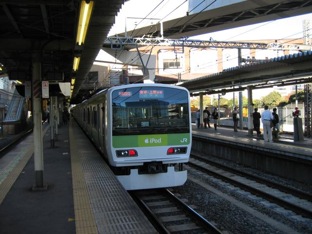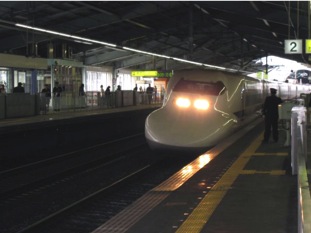
A Geek’s Guide to Kyoto (3)

Local Trains
A subway ticket from Kyoto (station K11) to Kokusai Kaikan (station K01) costs 260 yen. If you are going to ride the train more than once, you might consider getting a contactless ICOCA card (see below). Simply touch the card on the ticket gate on the way in and out. These cards are rechargeable and will eventually run out of money, if this coincides with your exiting a station, you may need to visit the “Fare Adjustment” machine to add enough money to make up any difference between what is left on the card and what the trip you just took costs.
Japan Railways (JR) is divided into several parts, JR East and JR West being the major ones, but for all practical purposes, these two companies operate as one. You may want to use JR for going to Osaka, Kobe, Arima (hotspring), Himeji (castle) and so on. Single tickets are of course available, but for extra geek points I would recommend that you buy a Suica or ICOCA card. This is a “...rechargeable contactless smart card...” and is being increasingly used as payment for all kinds of non-train services as well. On my most recent trip to Japan I used it to buy a soft drink at a kiosk, to pay for a luggage locker at a train station, pay for food a at fast-food counter and even to upgrade to first class (universally known as “Green Car” in Japan) on an express train. The only place where you can’t really use Suica or ICOCA is on the Shinkansen. (At least it gets a bit complicated to do so). Suica is the name given to the card by JR East, while ICOCA is the name used by JR West. You can only buy a Suica card in JR East land (Tokyo), if you buy the card in Kyoto or Osaka it will be an ICOCA card, but the cards are interchangeable and you can start with as little as 1,500 yen on the card. UPDATE: From March 18, 2007, Suica/ICOCA will also work on the Tokyo Metro. See: http://en.wikipedia.org/wiki/Suica and: http://en.wikipedia.org/wiki/ICOCA
Long Distance Trains
The “bullet train” SHINKANSEN runs all the way from Hakata in Southern Kyushu to the northern part of Honshu (the main island) with plans to eventually extend through the entire chain of islands to Hokkaido by 2020 and beyond. Service between Tokyo and Kyoto and beyond is very frequent and you will generally have to wait no more than 20 minutes to board your train if you just show up. Tickets can be purchased from machines, or from JR travel centers at any major station. You can use any major credit card to pay for your journey, but I would recommend carrying more than one card, or enough cash, since (for reasons I do not fully understand) foreign credit cards seem to be frequently rejected by JR. See also information about the JR Rail Pass system if you plan to take more than on long-distance journey.
There are three kinds of express trains: Kodama, Hikari and Nozomi, the latter being the fastest. A one-way journey in first class (“Green Car”) from Tokyo to Kyoto costs about US $150, or about $50 less if you forego the Green Car supplement.
(That last link lets you plan any journey between any two stations, including subway stations in Tokyo etc).
You can of course also FLY from Tokyo to Osaka, or Nagoya, but note that the airport for domestic flights is Haneda (near Yokohama) and not Narita. There is (of course) a dedicated Airport Limousine Bus that runs between Narita and Haneda. Said bus company also operates a whole bunch of routes from the airport to various parts of Tokyo.
Vending Machines
Japan probably has the largest number of vending machines in the world. Most of them sell various kinds of soft drinks. After a few hours in Kyoto in August/September, you’re going to gain a new appreciation for these machines. Most of them will even accept 1,000 yen bills in addition to 10, 50, 100 and 500 yen coins, and of course they give change. Note also that most of these machines dispense both hot (red buttons) and cold (blue buttons) drinks. The hot drinks include coffee and tea of various kinds (with or without milk and sugar) and even corn soup!




